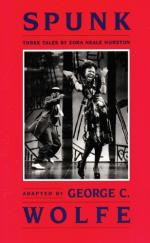|
This section contains 693 words (approx. 2 pages at 400 words per page) |

|
The Harlem Renaissance
When Hurston arrived in New York City in 1925, it was to become a part an intellectual, literary, and artistic movement that came to be known as the Harlem Renaissance. Since the end of World War I, African Americans had been migrating to Harlem, a section of New York City, seeking jobs in the new industrial economy. Soon Harlem was one of the largest black communities in the United States, and it became a center for black intellectuals and artists. The movement was inspired by older, established black intellectuals, including W. E. B. DuBois, who had founded the National Association for the Advancement of Colored People (NAACP) in 1910, and who called for a new racial consciousness and cultural identity. Other mentors included Charles Johnson, editor of Opportunity: A Journal of Negro Life, and Alain Locke, who compiled the 1925 anthology of poetry, fiction, and essays called The...
|
This section contains 693 words (approx. 2 pages at 400 words per page) |

|




